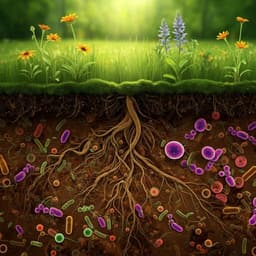
Agriculture
Continuous decrease in soil organic matter despite increased plant productivity in an 80-years-old phosphorus-addition experiment
M. Spohn, S. Braun, et al.
This research by Marie Spohn, Sabina Braun, and Carlos A. Sierra dives into the surprising long-term consequences of tillage and phosphorus in agriculture. While crop yields soared, the study reveals a concerning decline in soil organic carbon and phosphorus stocks, highlighting the unsustainable practices leading to soil degradation. Discover how carbon inputs are vanishing faster than expected!
Playback language: English
Related Publications
Explore these studies to deepen your understanding of the subject.







